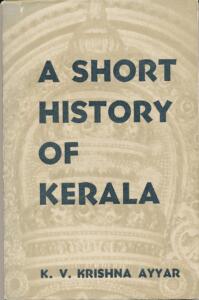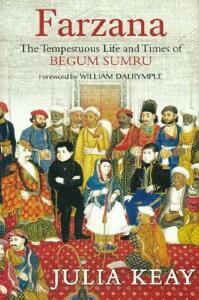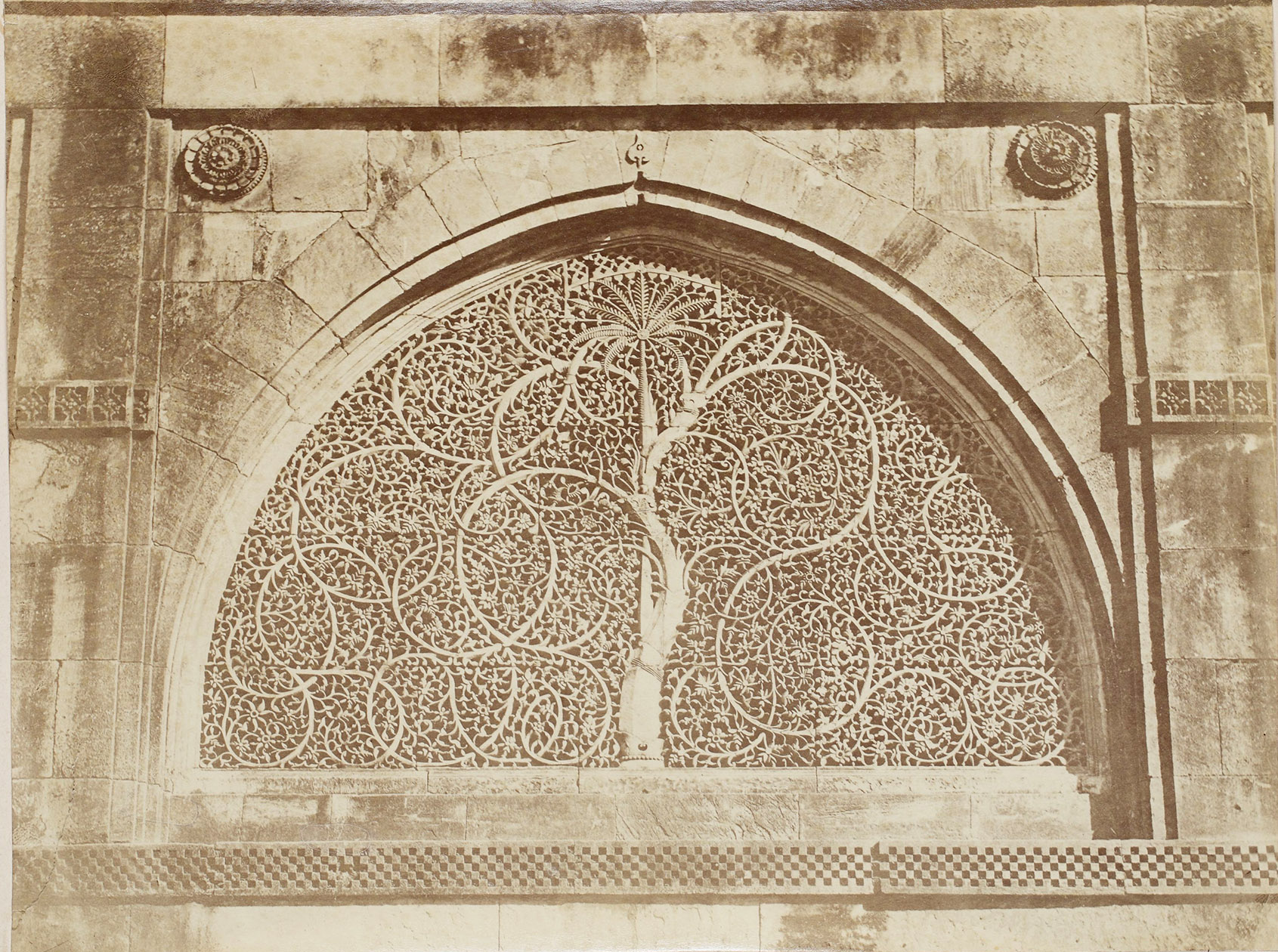We’ve settled into routines now and a big part of that is just vegging out on the couch, in front of a screen or in bed with a novel. It feels like all we’ve done this lockdown is read and reread books we love and binge-watch shows on Netflix. And so we have a new list of quarantine picks for you, this time by team Sarmaya.
On paper:

A short history of Kerala by KV Krishna Ayyar
A state that has some of the most ancient linkages with the Western and Eastern world, Kerala boasts of trade exchanges from the times of King Solomon. The ports cities of Kerala find mention in maritime logs like the Periplus of the Erythryean Sea and Muziris or Muchiri was one of the best known emporios of the world famed for its spices and stones.
This book is a handy compendium for all those seeking a quick summary of the Kerala landscape as it emerged from the Imperial Cheramans to the medieval kingdoms of the Zamorins of Malabar and the Rajas of Kochi and Travancore. This is a land that saw the Portuguese, Dutch and the English play out their political and trade ambitions from the 15th century onwards. The pivotal role played by Marthandavarma in the early to mid 18th century in consolidating the many principalities into a powerful Travancore that was honoured with a 19 Gun salute speaks volumes for the achievements of the great warrior king.
The book covers all these periods in brief chapters giving a wonderful overview of the state we now call ‘Gods own country.’
– Paul Abraham, founder, Sarmaya

The Tempestuous Life and Times of Begum Sumru by Julia Keay
As a lifelong fan of the only queen who mattered: Nur Jahan, the twentieth wife of the Emperor Jahangir, I could not help but contrast two of history’s leading heroines while reading Julia Keay’s Farzana: The Tempestuous Life and Times of Begum Sumru. One lady who, as consort to an emperor at a time when the Mughal empire was at its zenith, derived her considerable powers from the man on the throne (Jahangir) and the other, an independent, eccentric crusader, whose powers when the Mughal empire was at its raggedy end; kept a man on his throne ( Shah Alam II) and earned her the title of “Zebunisa” or ornament among women.
The ladies have some things in common. Both arrive to adulthood through tumultuous times, have stormy love lives, and marriages that catapult them into a different world. But while Nur Jahan’s reign begins and ends with the ascendancy of her husband, Begum Sumru’s is on a trajectory entirely her own. From starting life as a nautch girl, Farzana catches the eye of a German adventurer in India (Walter Reinhardt), several decades older than her. From this point, she journeys to become not only the leader of a formidable army but a revered adventurer who sat on an immense personal fortune in one the most illustrious estates of 18th-century India.
Her story is worthy of Sanjay Leela Bhansali treatment and Keay brings it alive with the right amount of masala and biographic detail. Its elements? – The not-so-secret affairs, conversion from Islam to Catholicism, and a pivotal role in the power-play between the East India Company’s imperial expansion across India and a tottering Mughal Court struggling to maintain its footing as a ruling power.
What makes Farzana a contemporary heroine is that she managed to defy the social conventions that would have written her off as a victim of her social class, her gender, her illegitimate birth. Her beauty gives her a natural advantage in the world of the men but it’s her powers of persuasion and beguilement that are her actual assets. Her ability to gain the trust of the men she seeks to entertain and then become their valued confidante is the real talent that propels her glorious transformation to Begum Sumru of Sardhana.
At a time when women acquired power as the wife or mother of a powerful man, Farzana needed neither of these titles. She came into her own as a supreme strategist when she was both childless and widowed and of course, quite hopeless in love. She became the protector of the Mughal emperor, Shah Alam – said never to have lost a single battle – and later, formed allegiances with the East India Company, under whose protection she lived in her last years and who inherited her fortune when she died, aged 86. At the height of her powers, she was still only semi-literate and yet she managed to charm not just the British authorities but their wives too.
As a devout Catholic convert, she ruled freely over a hybrid court where she no longer observed the restrictions of purdah observed by Hindu and Muslim women of the time. At her sumptuous dinner parties, the orchestra played everything from local tunes to medleys that included “God Save The King”, the anthem of the British monarchy she often rallied against. Another symbol of the peculiarly eclectic and hybrid nature of her court is the church she built in Sardhana. The Basilica of Our Lady of Graces mixes baroque and Mughal motifs uncaring of architectural convention. A classical dome rises from the midst of Mughal squinches decorated with Persian motifs and Christian graves are decorated with the most elaborate marble inlay and arches. Travellers’ tales from the time also tell of three day long Christmas festivities in Sardhana where a High Mass complete with overpowering incense would be followed by a nautch and a display of fireworks and poetry recitals by Sardhana poets.
Keay builds a skilful portrait of a strange but attractive world that embraced a fabulous fluidity of culture and practices presided over by the Begum whose world represented a plurality of beliefs that seems only possible in the Alice in Wonderland like world of late Mughal India. That Farzana, aka Joanna Nobilis, aka Begum Sumru, who smoked her hookah while her European guests enjoyed an after dinner cheroot, was accepted in all her avatars; of houri, warrior queen and almost saint pays testament not only to the unusual lady but the unusual times in which she lived. And Keay’s book is the most vivid account of the most vivid of self-made princesses.
– Pavitra Rajaram, brand custodian, Sarmaya

The Trial by Franz Kafka
One morning, Joseph K is irritated that his breakfast hasn’t arrived at its usual time. The bedroom door opens and he is faced with a strange man he has never seen before. This well suited man informed the innocent Joseph K that he is under arrest for a crime. The grand revelation of said crime never comes, not for us and here’s a catch, not for K. Yet, he is convinced he is innocent and that someone must have slandered him. From then on Joseph K’s life is consumed by bewildering bureaucratic establishments— especially the legal system that exists for the sole reason of self perpetuation. Sounds familiar?
Kafka’s writings weigh heavy on the pointlessness of all bureaucratic institutions, however mighty or small. This ‘way of seeing’ was considered so unique that critics gave it it’s own term, ‘Kafkaesque’. Kafkaesque has as many definitions as there are readers of Kafka, some even claim that they cannot describe Kafkaesque but know it when they see/ hear it. I would give the definition that appeals to me the most- ‘we view something as Kafkaesque when we think life itself is overpowering and undermining us (the protagonist)’.
Joseph K, the protagonist of The Trial is arrested in theory only, he remains ‘free’ to conduct business as usual and seek measures of Justice for himself. We quickly find him in a catch 22 situation where justice isn’t an option. Obsessed, K leaves no door unturned in the attempt of proving his innocence. For over a year, he passes through futile expeditions to achieve this goal. While the key of the story is Kafka’s layered commentary on the ‘systems’ that we live in and have lived in. The lock of the story is K himself – a man of admirable persistence, who is a bit too proud to see the futility of his struggles. Stubborn about delivering a speech in his trial, he comes at the problem with the right amount of the ‘wrong’ perspective. It is because of this that he cannot and will not see the futility of his actions, ending up in self destruction.
Since last January, the word Kafkaesque has seen a resurgence in the media. I and a few other Kafka readers believe that the world has always been Kafkaesque. We are and have always been just the right amount of wrong and egotistical to admit the futility of our actions. Though as we sit cooped up in our houses, grinding away at deadlines in the middle of a global pandemic, our nature becomes rather unavoidable.
– Kuhu Kopariha, Curatorial Associate, Sarmaya
On video:

Bulbbul, written and directed by Anvita Dutt
In an interview, Tom Sherak, President of the Academy of Motion Picture Arts and Sciences. says, “film is a reflection of society, both present and past. [Film] and it’s innovations sometimes have to catch up to society, but sometimes it leads society too. Movies are stories, movies are people who come up with ideas about something they want to say, something they want to tell someone. Movies are a form of communication and that communication, those stories, come from societies- not just where society is presently and what it’s doing now- but where society has been,” (“The Role of Film in Society”, 2010).
The story of Bulbbul revolves around the eponymous heroine, a child bride who is married into a royal family. At a tender age, her world is changed as she moves in with her husband, Bade Thakur Indranil, who is a few decades her senior; his developmentally-challenged twin brother, Mahendra, their younger brother, Satya, and Mahendra’s wife, Binodini. Naturally, Bulbbul finds comfort in Satya, who is closer to her age. But calamity strikes when years later, Indranil gets jealous of them, culminating in wife beating, rape and finally Bulbbul’s death. However, Bulbbul’s body is possessed by Goddess Kali and she comes back to life. To townsfolk, she is a chudail, a demonic revenant with backward feet who preys on men and feeds on their life force; to her doctor friend, she is a Goddess. In the end, she is presented as a vigilante who is morally correct for killing the immoral characters.
The film is a clear allusion to the life and stories of Rabindranath Tagore (with supernatural embellishments, of course). Born in 1861, in the Jorasanko Thakur Bari, Rabindranath Tagore was an avid writer, partly as the Tagore family was at the forefront of the Bengal Renaissance. His elder brother, Jyotirindranath, married Kadambari Devi when she was 10 and he was 19. Tagore, being just 2 years younger than Kadambari Devi, began to develop a friendship with her that slowly turned romantic, not unlike Satya and Bulbbul’s. Just as Satya was sent to England to study because of his closeness with his sister-in-law, so too was Tagore. This left Kadambari Devi, much like Bulbbul, devastated. Kadambari Devi, during Tagore’s absence, died by suicide in unknown circumstances. Kadambari Devi, however, was not reincarnated. Additionally, the names of Binodini and Mahendra, are straight from Tagore’s Chokher Bali, where the main character, Binodini, has an affair with a man named Mahendra.
Bulbbul’s character arc: a woman who is abused and returns equal to her abusers in violence, is a played-out horror trope in countless horror films. Jennifer Hills, from the I Spit on Your Grave series of films, is a perfect example. Jennifer Hills is raped and tortured by a gang of thugs, before gaining the “strength” to come back and violently murder each and every man who wronged her. Also, Kim Bok-nam from the 2010 South Korean thriller Bedevilled, after being abused and enslaved by her husband, suddenly snaps and kills the men who wronged her.
This film markets itself as a feminist narrative, with a female protagonist who is badass, independent, powerful, and intelligent. But there is a disconnect between what the film appears to be and ends up implying. Why should a woman be portrayed as a victim before she is portrayed as powerful? This perpetuates the incredibly harmful stereotype that a woman can only be powerful after she has been violated. This is particularly egregious in Bulbbul as it is hinted that the source of our protagonist’s strength is divine or supernatural, thereby implying that women don’t have inherent power and require outside interference to be badass, independent, powerful, and intelligent.
All the men in the movie are shown as hateful and oppressive savages, but I am unable to understand why the movie forces Bulbbul to stoop to their level. The key principle at play here is “if you murder a murderer, the number of murderers in the world remains the same.” Bulbbul’s chosen path to making society a better place is inflicting the same violence and hatred on the abusers, but that does not make her morally superior. The film makes it seem as if a woman must do the things that evil men do to be powerful, rather than understanding the merits of affecting change in other ways and being the bigger person.
Bulbbul attempts to criticise Indian society for its deep-rooted classism and sexism. The fact that films and television shows are being made to try and raise awareness, or start a conversation, about these issues is commendable. But the problem presented by movies like Bulbbul is the lack of nuance with which they approach these issues. The vast, sweeping generalisations made by Bulbbul are easy for critics to dismiss by calling them “overblown” or “exaggerated”. The fact that this film plays into as many stereotypes as it attempts to address is its biggest shortcoming, and that’s where, ultimately, all the progress that Bulbbul attempts to make is demolished.
– Prithvi Subrahmanyam, Contributor



